This past spring I planted a number of Habaneria radiata – crane orchids – in different soil mixes to see how well each worked for propagation purposes (see Growing terrestrial orchids for details). The first flowers appeared this week so I thought it would be a good time to share the results.
A few things surprised me. Some of the obvious options – akadama in particular – didn’t perform as well as expected. Likewise, some of the options that I didn’t think would work well – decomposed granite, for example – worked quite well.
After growing these orchids for four months, I think the surprises say more about the environment in which the orchids grew than they did about the overall effectiveness of a given planting medium.
Because the orchids in decomposed granite and orchiata dried out quickly, I watered frequently. As a result, the orchids in dry mixes fared well and the mixes that stayed wet didn’t do as well. I thought about separating the plants so each could receive a more appropriate level of water, but I was curious how they’d do given equal irrigation.
Here are some shots of the orchids through the growing season.
May – the orchids looked similar after one month
Close-up of the foliage
Early July – all are healthy, but the orchids in orchiata and decomposed granite are on the small side
Healthy orchid foliage in kanuma
Late July – size differences remain, some yellowing appears
Early September – four months after planting
Note the yellow foliage on the left
In the photo above, the yellow foliage stands out to me as it suggests that one of the soil mixes didn’t perform as well as the others. The leaves were vigorous, but the foliage didn’t look as good. These yellow orchids were planted in potting soil.
As for the individual results, I’ve provided a photo for the best specimens in each mix. They are arranged according to vigor, beginning with the healthiest.
Crane orchids planted in kanuma – the healthiest of the bunch
Bonsai soil – 1/3 lava, 1/3 pumice, and 1/3 akadama – also produced very healthy orchids.
Planted in bonsai soil
Medium sized pumice with moss mixed in did well too – significantly better than straight pumice with no moss.
Pumice with moss
One of the bigger surprises was how well the potting soil did. Although the color was off, the vigor was good. I’d expect that more fertilizer and less water would have produced better color.
Potting soil
The orchids in decomposed granite had some of the best color – no yellowing, no brown tips. They were a big shorter than the orchids planted in pumice with moss, but they looked great.
Planted in decomposed granite
The question I have is how well they would have grown in drier conditions.
Likewise the orchids planted in orchiata – the go-to choice for many orchid growers. The Habaneria planted in orchiata were healthy, but not as strong as the above specimens. I’d be curious to try the mix again with less water to see what happens.
Orchiata
Pumice produced mediocre results – not great, but not bad either.
Planted in Pumice
The perlite performed about as well as pumice. I only planted four bulbs in this mix so it’s a smaller sample, but I’d be more interested in experimenting with the above options than with perlite.
Perlite
Rounding up the bunch was akadama. My guess is that it stayed too wet for the orchids, but it could have been any number of things. I’d need to try again to get a better sense of whether or not it could be a good option on its own.
Akadama
Key Takeaways
Going into this experiment, I didn’t know what, if anything, I might learn from it. I was happy to find it reinforced some key ideas that apply to bonsai as much as to orchids.
- When growing a batch of plants, look for patterns among specimens
- Look for patterns over time too – what’s uniform now might change later
- When it comes to soil, environmental factors can make a huge difference
As is often the case, the experiment generated as many questions as it answered. I’m now curious:
- How does container size affect growth? The present results reflect propagation conditions – not kusamono/shitakusa conditions.
- How would a given soil perform given different levels of sunlight or water?
- How would different particle sizes perform?
- Can different fertilizers make up for the differences I observed?
- How does H. radiata grow when planted together with other species?
Later this season, when the flowers have come and gone and the leaves have dried up and faded away, I’ll dig up the bulbs and see if there are any differences between them. In the meantime, I’ll be enjoying the delightful flowers – the reason we’re growing crane orchids in the first place.
Crane orchid
A big thank you to Anthony Pancotti of Kusamono Gardens for suggesting the experiment and providing the orchids – I hope this helped!
Countdown to the U.S. National Exhibit: 8 Days
The U.S. National Bonsai Exhibition in Rochester, New York, is about one week away. I’ll have trees, tools, pots, books and supplies available at the event, including the containers shown below.
Clockwise from top left: Koyo, antique Chinese, Tazan, Itou
It’s time to start packing – hope to see you there!
Subscribe to Bonsai Tonight
New Posts Delivered Every Tuesday and Friday
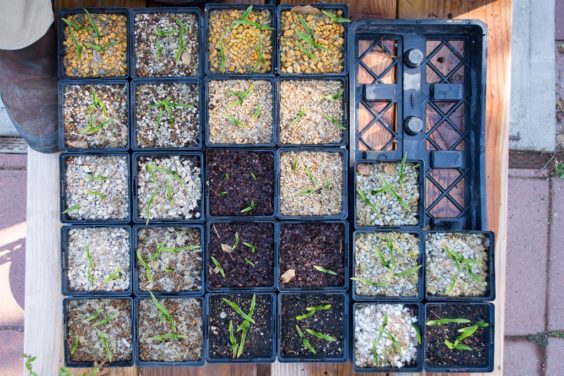
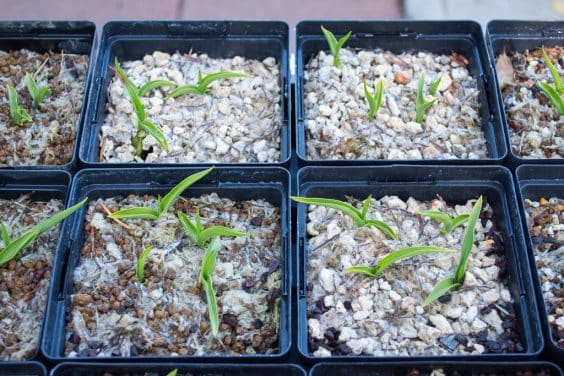
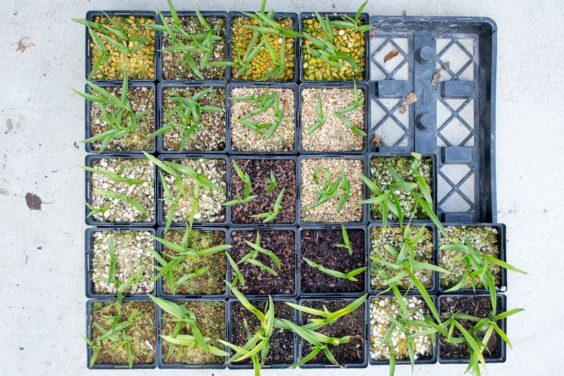
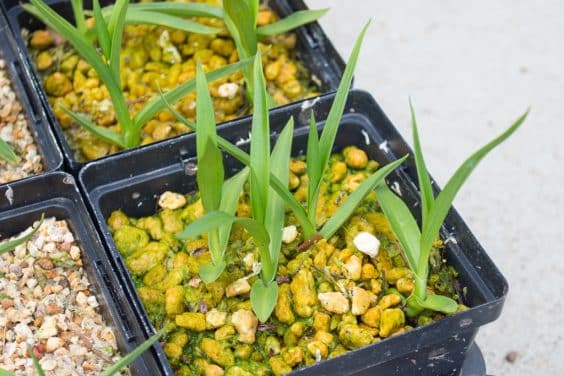
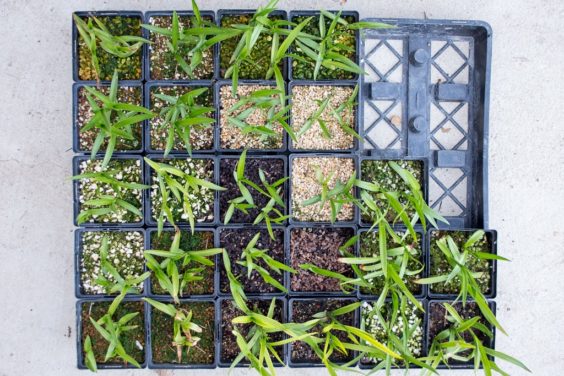
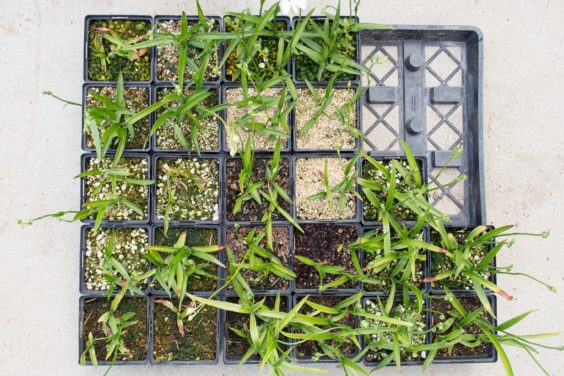
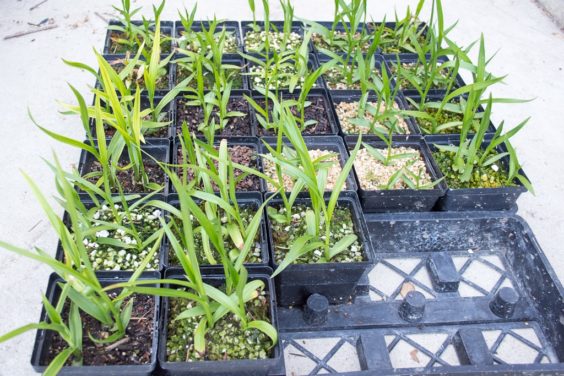
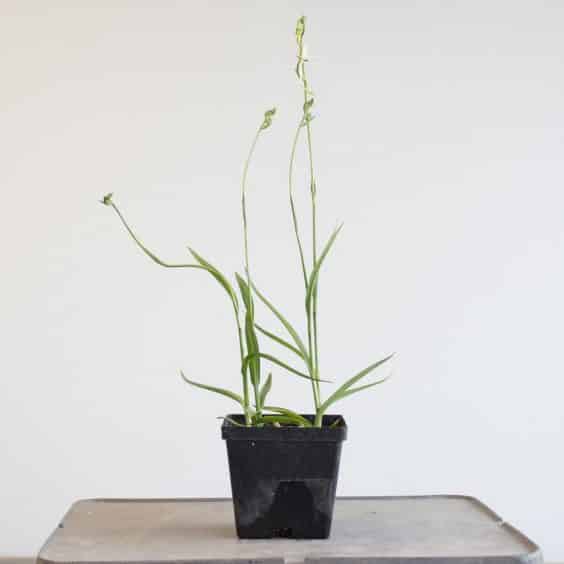
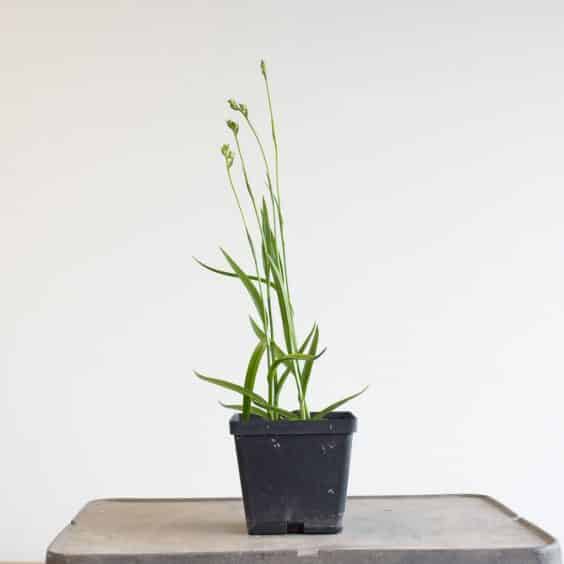
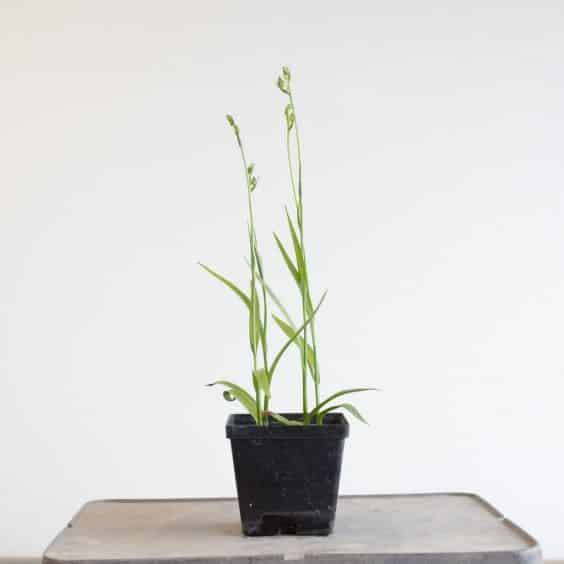
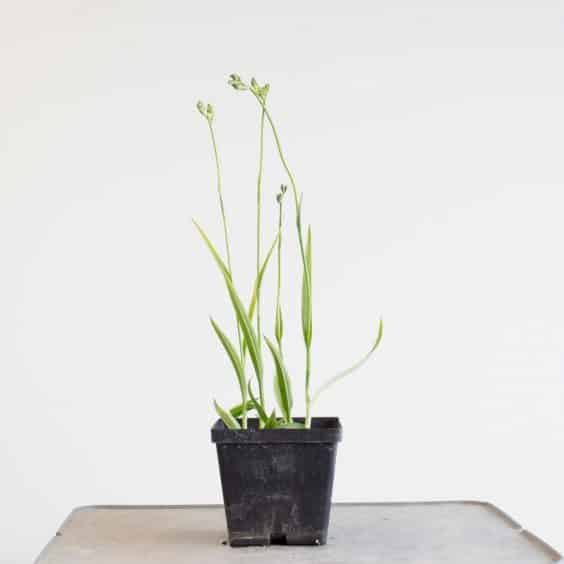
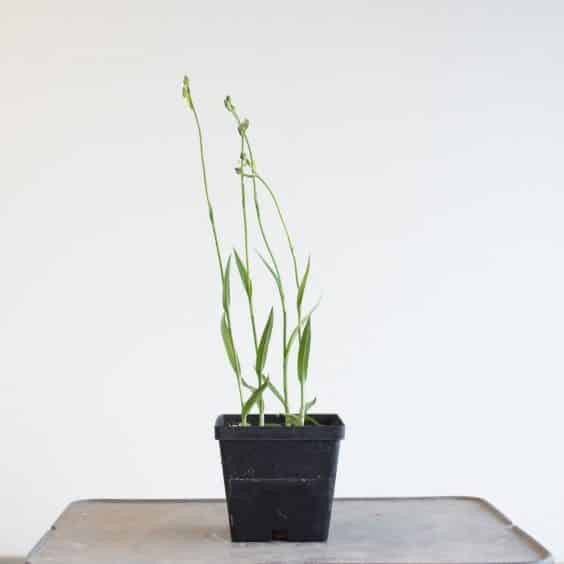
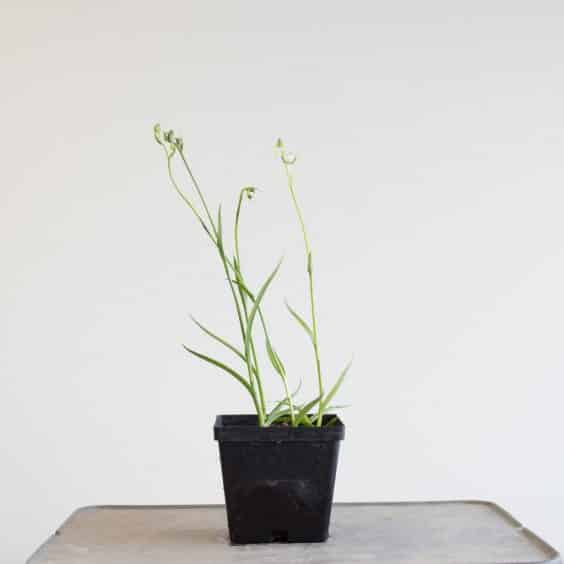
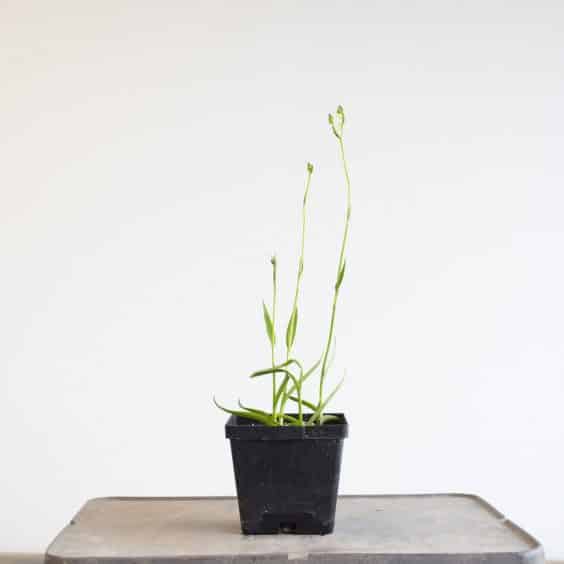
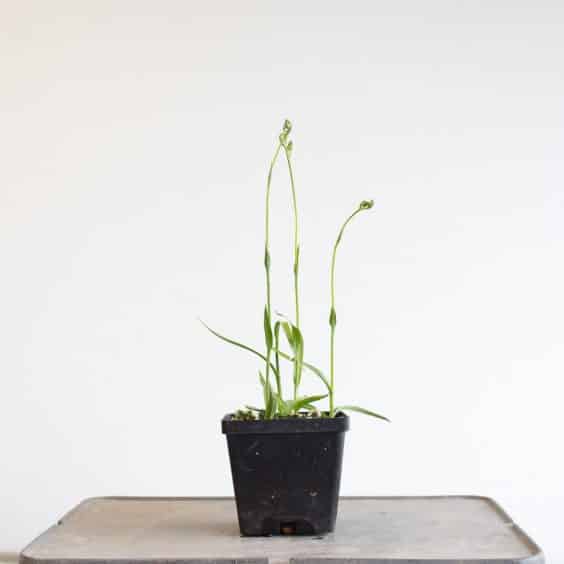
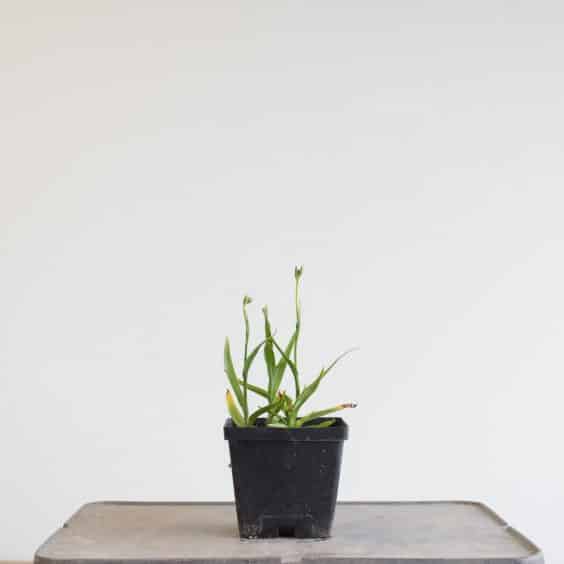
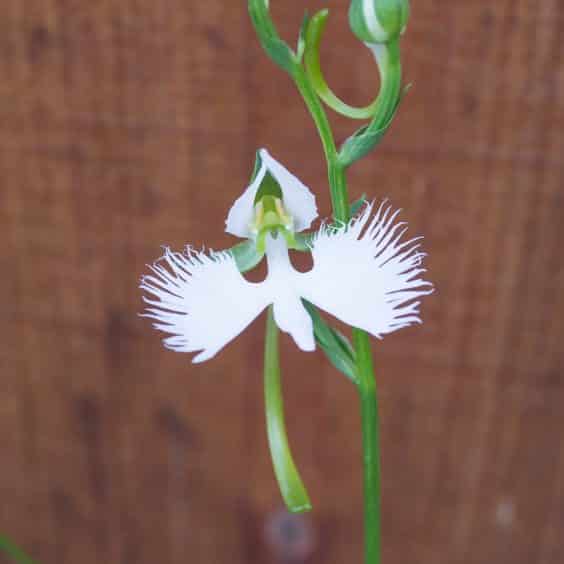
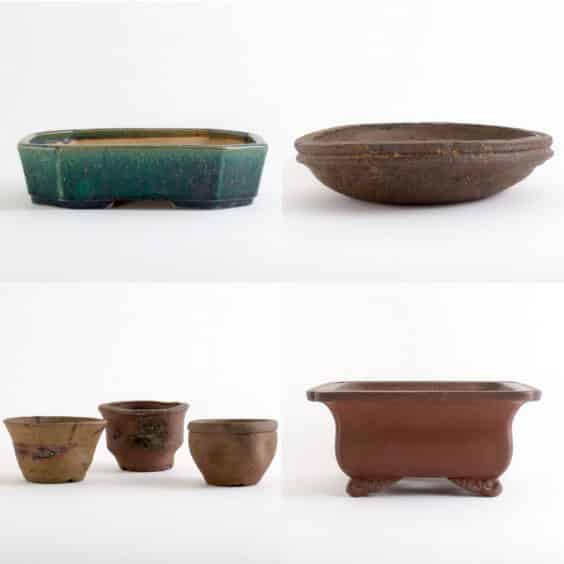
Michael Cole says
Jonus
as always, thanks for the great info. do you plan on doing a follow up post after flowering?
thanks, Mike
Jonas Dupuich says
Thanks Michael – I’ll do a follow-up if I learn anything interesting, otherwise that’s it for now. Do let me know if you have suggestions for what to watch for from here on out.
Zak Dauer says
Great post! I love your comparison posts, they are full of useful information and thoughtful ideas. I planted h. radiata bulbs this year as well, in layered kanuma and sphagnum moss and got similar results to the straight kanuma. Beautiful flowers, they are so delicate.
Brian McGrath says
Hi Jonas
Where can one find crane orchid bulbs. I need some.
Brian
Jonas Dupuich says
Hi Brian – I don’t currently have a source for the bulbs, will post an update if I find one.
Jonas Dupuich says
Hi Brian – Kusamono Gardens is having a pre-sale now for bulbs that will be available next year. See their site for details.
Ben Goodman says
I would love to know if the growing medium affected the likelihood of the bulbs to produce new bulbs once the blooming period is over, even if it’s just a small table after one of your other posts in winter.
Jonas Dupuich says
Hi Ben – I’m curious too. Am planning to check at some point and provide an update.